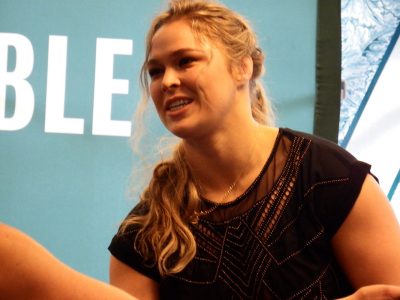
For decades, combat sports in America were said to have been on the decline. Far removed are the days of radio and early television when boxing dominated the news and millions upon millions would tune into Muhammad Ali fights. Now without big names like Ali or Mike Tyson, boxing and other similar sports have been relegated more toward the periphery of the sports world, at least in America. Some praise this shift, suggesting that it is a sign people are progressing, and no longer get a kick, no pun intended, out of watching someone get beat senseless.
But don’t tell any of this to the UFC. The Ultimate Fighting Championship, which was founded in 1993, has slowly grown from a glorified pay-per-view fight club into a bona fide international phenomenon. What started as a battle royale-style tournament with almost no regulations or rules has in the past 10 years become a highly regulated, structured and most importantly, very profitable sport. In July 2016, the UFC was sold to a new ownership group for approximately $4 billion, a record-breaking amount.
It appears that the UFC is only continuing to rise in legitimacy and popularity. What accounts for this ascendance, and what does it say about us? For starters, the UFC has managed to generate legitimate superstars, names like Conor McGregor and Ronda Rousey who are recognizable even to those who do not follow the sport. These fighters have managed to become some of the highest earning and most recognizable athletes in the world, lending their sport legitimacy in the process.
But these big names generate money not only for themselves, but for their sport as well. As the UFC has grown, rivalries have emerged such as McGregor’s with scrappy American brawler Nate Diaz, or Rousey’s with former boxing champion Holly Holm. These rivalry fights have become marquee events in the sports world, generating ratings on par with more established events, and creating the buzz essential for a sport to take off.
Rousey’s is a particularly interesting case. After a series of fights in which she took less than 20 seconds to defeat her opponents, she became one of the sport’s premier figures. She has gone on to feature in Hollywood films and model for Sports Illustrated, while still maintaining her persona as a tough and menacing presence inside the octagon.
The fact that one of such an aggressive, violent, testosterone-fueled sport’s biggest stars is a woman has surprised many. Some even see Rousey and other female UFC fighters as empowering, simply for the fact that they are succeeding in a realm not typical for women. The UFC has tried to play up this fact, stressing that while the violence of their sport might seem damaging, their politics are actually far ahead of other major professional sports.
Rousey’s own views on the matter are hard to decipher. She is often asked about the gender pay gap in sports or whether she considers herself a role model to women, and she usually attempts to define herself as an individual rather than an advocate for a particular group. However, she is also extremely vocal about the fact that the UFC incorporates women into their organization rather than giving them a separate league like the WNBA. She prides herself in making as much as her male counterparts because she brings in as much money, not because she receives any special treatment.
The UFC seems in some ways to be beyond the gender issues that so many traditional sports have struggled with. But it is by no means perfect. Even in its new more structured form, the violence still presents a major obstacle to the sport ever attaining true ubiquity. While many bemoan the violence of our most cherished sports like football, there is nothing that quite compares to watching two people mercilessly beat each other for five rounds.
There is rarely a fight that does not end with blood spattered on the floor of the octagon, and the faces and bodies of the athletes swollen and contorted in frightening ways. And even disregarding the basic level of violence of each fight, UFC has been host to some incredibly gruesome injuries. Legendary fighter Anderson Silva shattered his tibia in the middle of a fight several years ago, and there have been countless, gashes, hematoma, shattered noses etc. that will most likely affect the fighters for the rest of their lives.
No matter your opinion of UFC and sports like it, they do not seem to be going anywhere. The McGregor-Diaz rematch in August broke ratings records, and Rousey is set to fight in the main event at UFC 207 in December with a chance to reclaim her title. The UFC many never reach the established popularity of football or baseball, but people’s thirst for violent competition does not seem to be going anywhere fast. And if we as a people have decided that watching two people injure each other is fun, the least we can do is judge our violence in a fair and balanced way.




